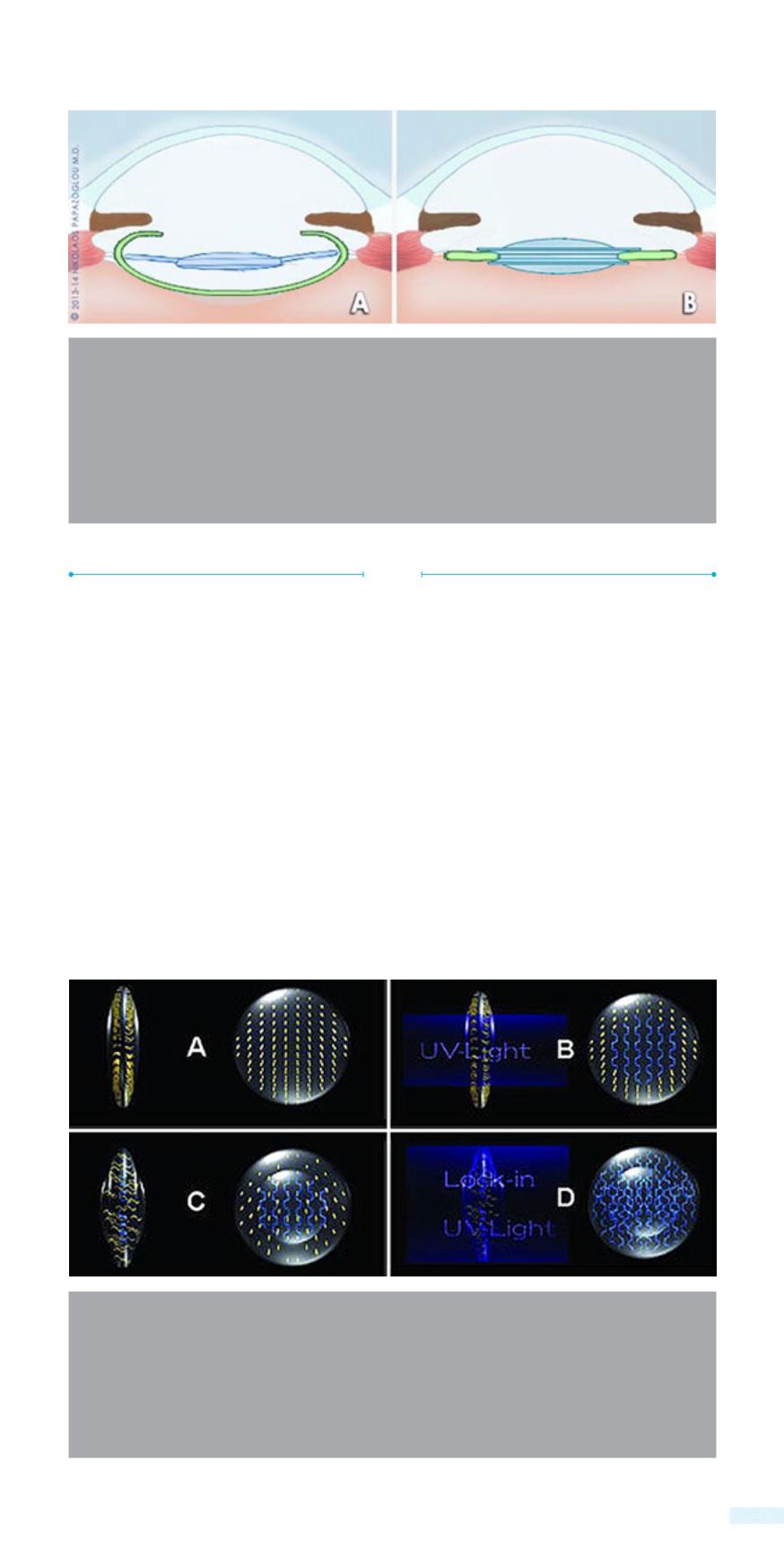
11
Figure A:
The Standard way of placing the traditional intraocular lens in the
bag. The posterior capsular bag may become opaque after surgery.
Figure B:
Placement of the Tassignon intraocular lens. There has been a
prior posterior capsulorhexis and the unique design of the lens forces the
two surfaces of the sac in close proximity not allowing room for epithelial
cells from the lens to multiply and opacify the optical axis.
This is an IOL design that allows the adjustment of power of the
intraocular lens in a second phase, after the surgery, with the use of
ultraviolet light.
It is a complicated construction made from photosensitive silicone.
After reaching the best possible visual acuity for the patient (even
with multifocal effect) after the operation, another light beam
“locks” the shape of the IOL and its strength, in order to neutralize
secondary refractive errors or to account for the patient’s visual
needs.
8
Experimental design IOLs
8a
⁄
Light adjustable lens
Α.
Intraocular light adjustable lens.
Β.
A special ultra violet laser
beam is directed by the doctor at the lens body.
C.
The beam causes
photochemical changes to the lens material which causes a well
controlled change in the shape and hence the power of the lens.
D.
When the required refractive result is achieved, another laser beam
(locks) the lens from further changes.


